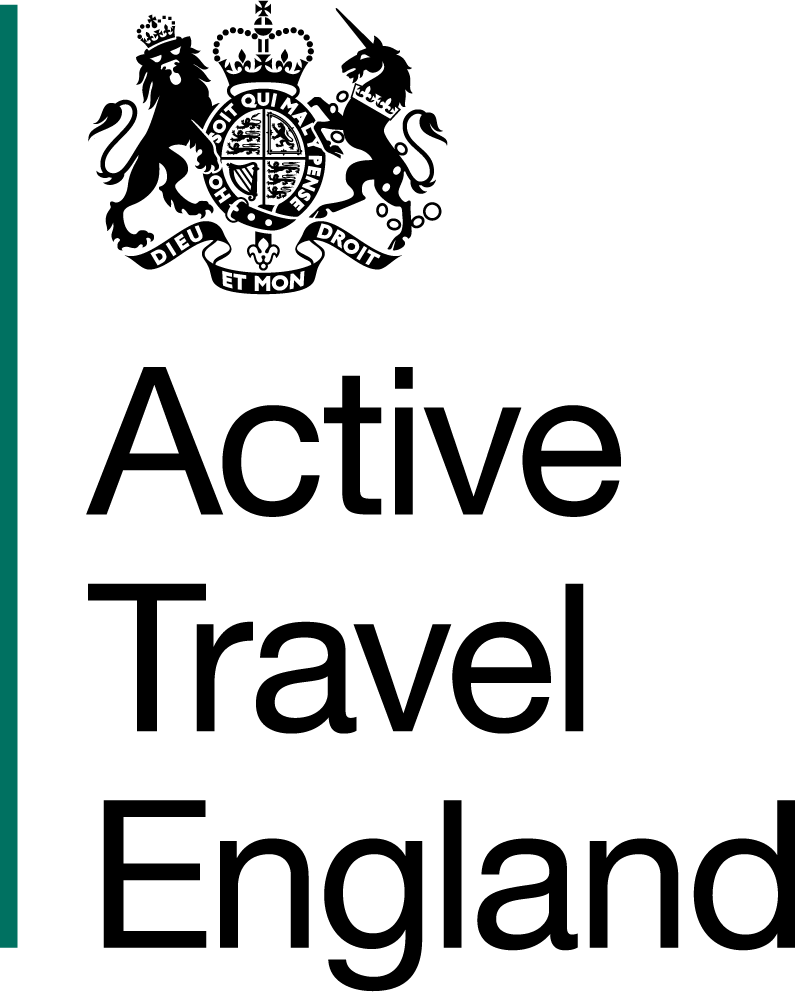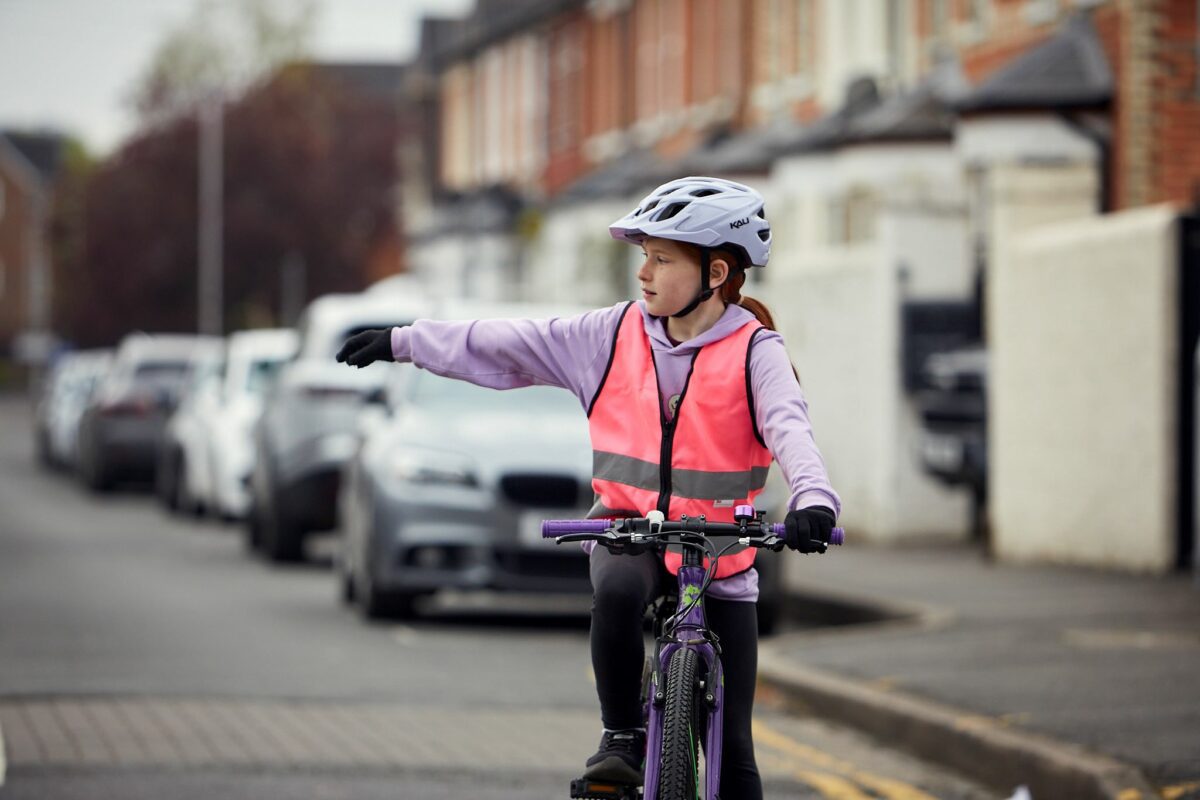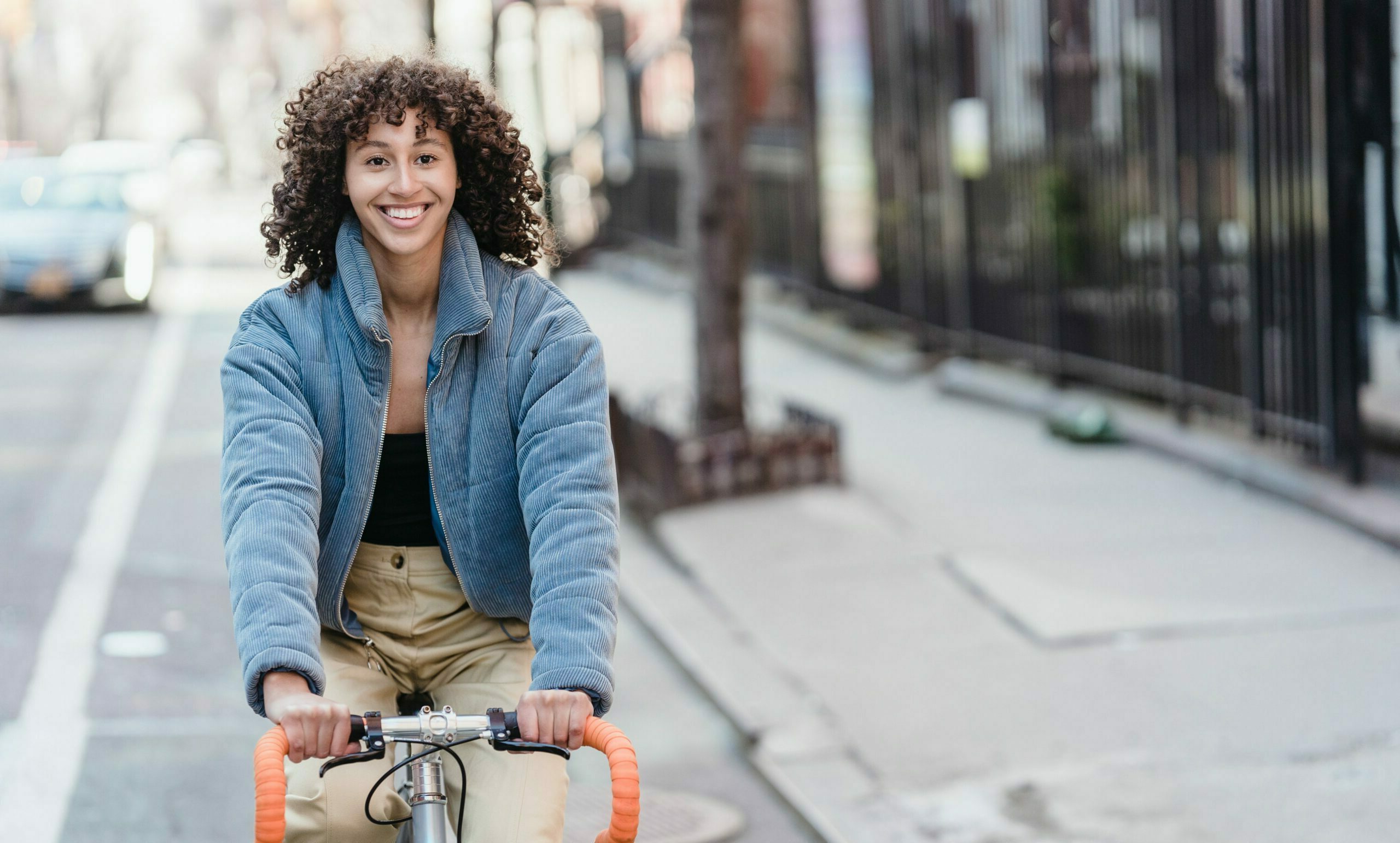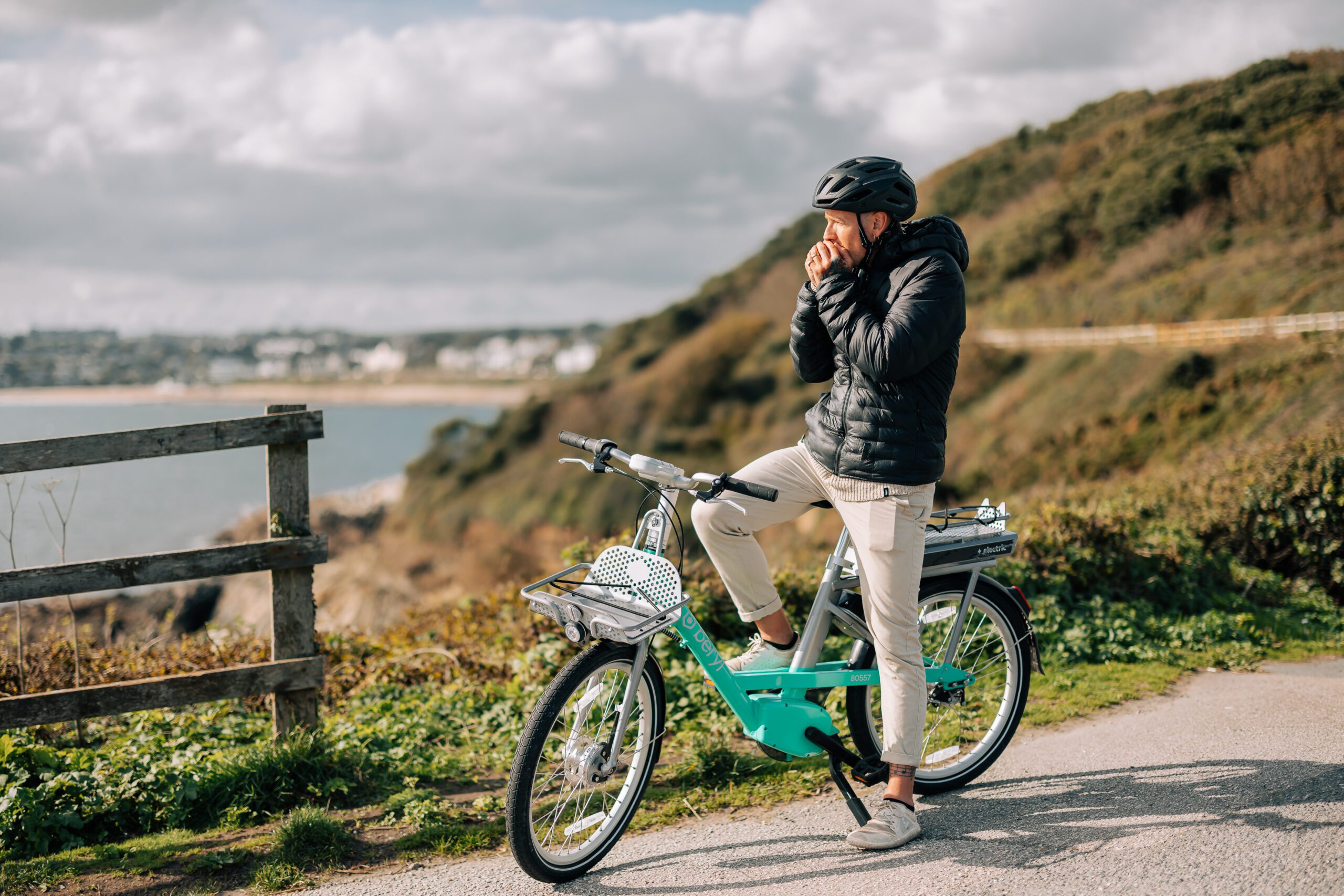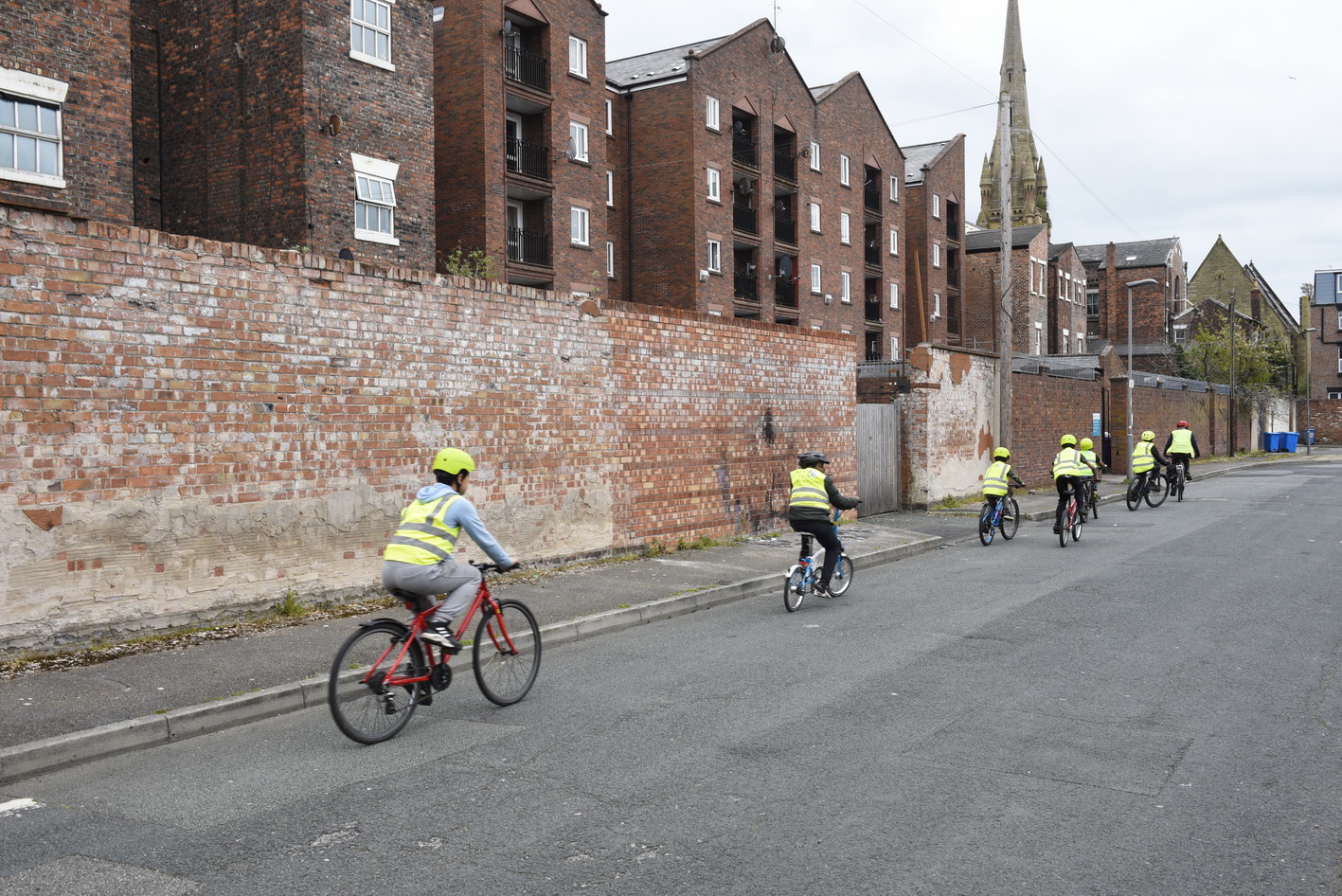We’ve partnered with NatWest Rooster Money to give your kids a head start with money. Whether it’s through Bikeability cycle training or building money skills with Rooster Money, we’re proudly supporting young people to learn new skills, build their confidence and earn some independence. As Rooster Money are sponsoring our Cycle to School Week, we’ve co-written this cycle to school post to help kids learn basic cycling safety rules and feel confident on the road.
As parents, we always want what’s best for our kids, especially when it comes to them gaining their own independence. Letting your kids cycle to school alone can give them that sense of freedom and independence, but the thought of your kids riding on roads alone can be daunting. To help ease the nerves, we’ve pulled together three top tips to get your kids prepared and feeling confident in their journey before they even begin pedalling.
1. Learn the rules of the road
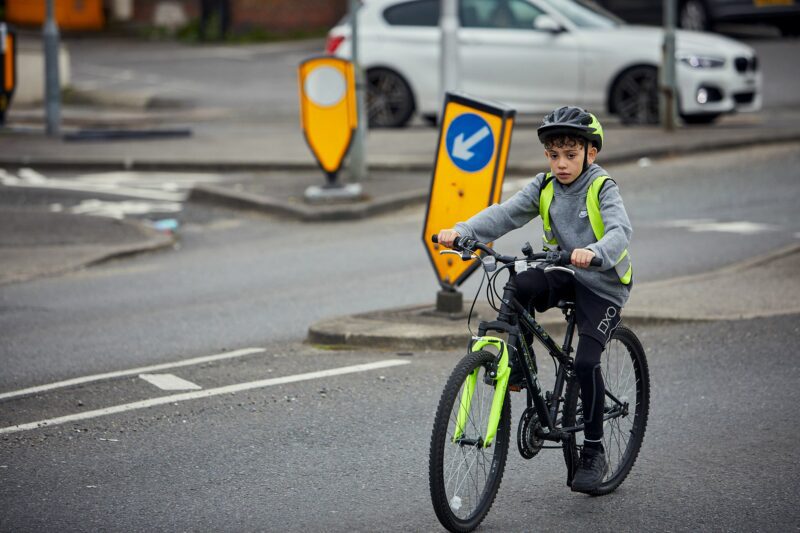

One of the most important parts of road safety for kids is making sure they nail the basics before you let them cycle to school alone. Knowing these basic rules can reduce the risk of accidents and boost their confidence while cycling.
Know the Signs
Start by teaching your child the meanings of important road signs. Take them on a walk to point out and discuss signs like give way, warning signs (red triangles), and cycle path markers (blue circles). Understanding these signs will help them to react properly to different traffic situations.
Understand Traffic Lights
Most kids know how traffic lights work but it’s important that they learn to follow them properly. Next time you’re in the car together or out on a walk, practise with them at different lights. Make sure they know to always stop at red lights, keep their eyes peeled at amber lights, and only go when the light is green. Make sure they remember to look both ways before crossing, even when the light is green.
Communication
Hand signals are also important when cycling to show other road users where you’re going. Teach your kids the basic hand signals for turning left, turning right, and stopping. Communication is one of the four key skills of Bikeability. The others are: Observation (looking around – do this before communicating), Positioning (where you should be in the road), and Priority (who goes first over others). Practise these skills in a safe place, such as an empty car park or a quiet street, until they’ve got the basics nailed.
2. Plan and Practise the Route
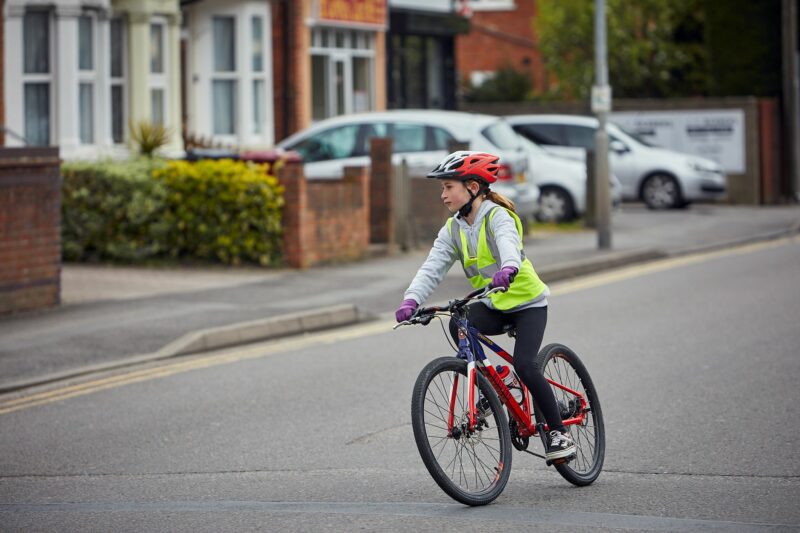

Knowing the safest route to school can reduce any worries your kids have, and boost their confidence when the time comes to cycle to school on their own.
Safe Route Selection
Start by choosing a quiet route to school. Look for roads with less traffic, cycle paths, and safe crossing points. If possible, avoid busier roads and areas without pavements or cycle lanes.
Trial Runs
Practise multiple trial runs of your chosen route together. These practise rides will help your kids become familiar with the route, landmarks, and any potential hazards. You can then slowly reduce your level of supervision with each practice run. Begin by riding alongside them, then follow from a distance, and finally you can let them try the route on their own.
Landmarks
Teach your kids to look out for key landmarks along the route, such as parks, buildings, and signs. Knowing these landmarks will help them to get familiar with the route and make them feel comfortable knowing they are on the right path. When you do a practise ride, you can also help them by pointing out safe places to stop if they need help, such as a friend’s house or a shop.
3. Equip Them Properly
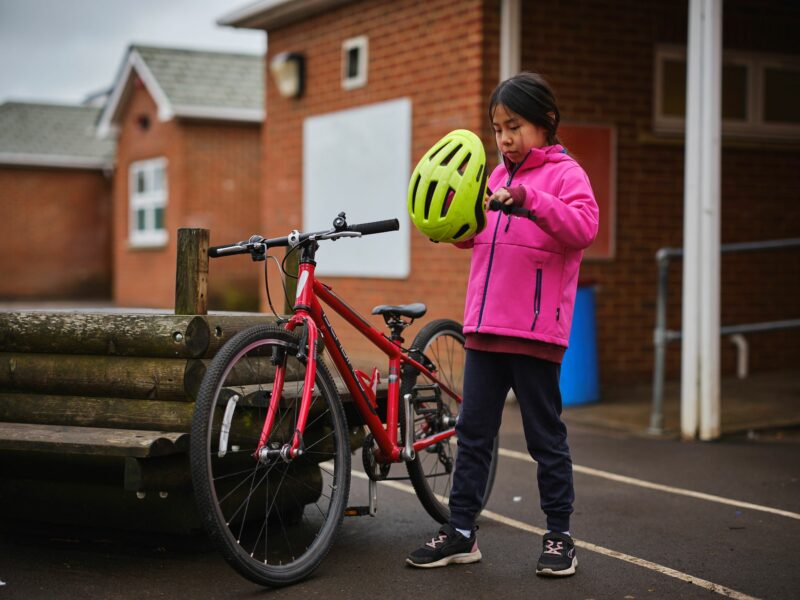

You’ll want to make sure your child has all the proper equipment so they can cycle to school safely. The right gear can protect them in the unlikely case of an accident, improve their visibility, and make their ride more enjoyable.
Helmet
A well-fitting helmet is the most important piece of safety equipment. Make sure the helmet meets safety standards and fits snugly on your child’s head. The helmet should sit level on the head, covering the forehead, and the straps should form a V shape under the ears, with the buckle securely fastened under the chin. Teach your child to wear it correctly every time they ride.
Reflective Gear
Visibility is super important when riding, particularly during early morning or late afternoon rides when it can be a bit darker (especially in winter). Make sure your child has a brightly coloured coat or jumper to help them stand out on the road. You can also add a few accessories, such as reflective tape on their cycle and backpack, to keep them visible to drivers.
Other Accessories
There are loads of other handy accessories to keep your kids safe when cycling. A bell can be useful to alert other cyclists and people walking on pavements. Front and rear lights are also handy for visibility, especially during the darker winter months. A good lock is also important to secure the bike at school. Have a think about what’s most important for your kids and choose accessories that suit their needs.
Road safety for kids is so important and by practising these three tips, your kids will be confident cycling pros in no time. When the time comes to cycle to school themselves, they’ll have everything they need to enjoy a safe journey on their own.
If you’re interested in giving your kids the opportunity to earn some independence and learn new skills, check out NatWest Rooster Money to give your kids a head start with money. Their Rooster Card is a prepaid debit card for kids aged 6-17 that can help them take the next steps towards confident money management. Head to the Rooster Money website to learn more about the Rooster Card and how it can help your kids to get a head start with money.
This is a paid for advertisement feature.
